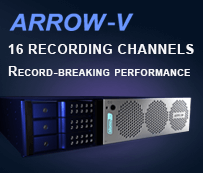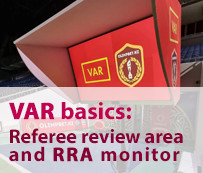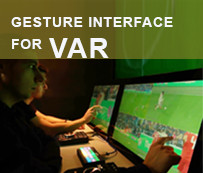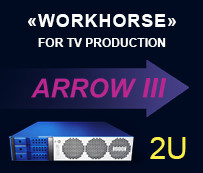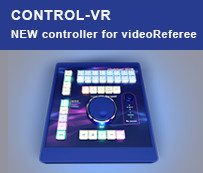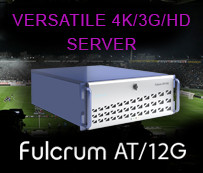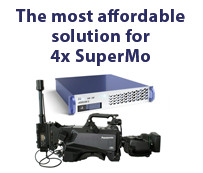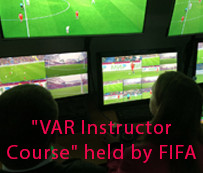Slomo.tv servers traditionally work with embedded sound. This is because in SDI the audio is transmitted together with the video signal, thus providing synchronization of audio and video. Since audio synchronization is performed by specialized equipment external to slomo.tv servers, it is the responsibility of the sound engineer to ensure high audio quality and monitor the audio channels. The slomo.tv server only records the audio input or plays it back. This workflow significantly reduces the number of required connections and cables.
In case of non-embedded audio, namely analog, AES/EBU, MADI or DANTE® signals, the audio may be digitized at a frequency that is not synchronous with the video. As a result, the number of samples of incoming audio per frame may be higher or lower than required by the standard. To normalize the number of samples would require additional processing, which could result in a loss of quality and, most importantly, would shift the responsibility for audio quality to the server.
Since multichannel audio is actively used in the video industry, slomo.tv has to provide the ability to input and output such audio. This is done by special subsystems, allowing embedding the required number of audio signals into any SDI video channel, as well as de-embedding them. These “digital glue” solutions are usually used in studios and OB Vans for getting the required result quickly and with a minimum number of connections.
For working with different audio sources and formats we offer several options. All of these involve the use of embedders for embedding analog or digital audio into an SDI signal.
Solution for analog audio and digital AES/EBU audio
A simple and budget-friendly solution is to use Mini Converter Audio to SDI from BlackMagic Design (BMD). One converter works with up to four analog signals or four stereo channels transmitted over a digital AES/EBU connection via standard AES cable.
This solution is very flexible: the same device can be used for both analog audio and AES/EBU digital audio. If analog audio is used, the audio quantization rate is synchronized with the SDI quantization rate, ensuring synchronous audio and video.
These converters also allow changing levels of input signal for working with different types of sources. In case of AES/EBU, the embedder automatically resamples the audio to synchronize it with the video.
One device can be used to embed up to four channels. If necessary, embedders can be connected in cascade, setting one embedded audio group on one of the devices and another on the other.
For providing analog or AES/EBU audio playback we recommend using the BMD Mini Converter SDI to Audio.
If you need to control the audio, a BlackMagic Design's SDI to HDMI™ converter with an analog audio output can be used.
MADI and DANTE®
Audio transmission using MADI (Multichannel Audio Digital Interface) and DANTE® interfaces has recently become common in audio production and audio processing subsystems. The main advantage of these interfaces is the use of a single cable, which saves the number of connectors for the audio recording, playback and processing equipment.
When using MADI, audio is transmitted over a single coaxial cable and can include up to 64 channels of audio. When transmitting using DANTE® technology, Ethernet is used as the physical environment. In this case, one connection can provide not only a multichannel input but also a multichannel output. In fact, two components of the system are connected by one standard Ethernet cable with RJ-45 connectors or using the network subsystem of a OB Van / video control room, where DANTE® audio is transmitted over a standard Ethernet connection.
Solution for multichannel digital MADI audio
For embedding MADI audio into a SDI signal there are specialized external devices, which can be called MADI embedders / de-embedders. Thus, external high-quality equipment is responsible for the resampling.
We recommend using AJA FS-4 and AJA FS-2 to work with MADI audio. These devices are useful in studio or OB Van for a large number of tasks, and not just for use with slomo.tv servers.
These universal devices can be categorized as "digital glue", which in addition to audio embedding and de-embedding functions have internal functions for audio matrixing, resampling, frame-by-frame synchronization with video, upscaling and downscaling.
AJA FS-4 is a 4-channel device that allows receiving four input SDI signals. It has 4 BNC connectors and 4 optical. Also the device has 2 MADI interfaces - 2 MADI inputs and 2 MADI outputs.
When it is necessary to work with MADI sound, the MADI output of the mixing console is connected to the input of this device and, using external web control, the matrixing is set up so that the audio is embedded into the required pairs of the desired video streams. Thus the server receives synchronized audio embedded in the "right" channels.
When working in Replay mode, the audio subsystem of the OB Van may need the audio output from the server via the MADI interface. In this case, the SDI output of the server is connected to the same device and, using the web interface again, the matrixing of the desired audio channels into MADI streams is performed.
If the server is used in recording for editing mode, all inputs of the AJA FS-4 are used for embedding the audio.
The junior model AJA FS-2 differs from FS-4 only in the number of processing channels: FS-2 has two channels, which limits the amount of audio channels that can be embedded in the video.
Once again we would like to emphasize the versatility of AJA FS-4. The device can work not only with MADI, but also with AES/EBU digital audio. On the rear panel of the AJA FS-4 there is a 16-channel input and 16-channel output. If the OB Van or studio audio subsystem uses AES, it is possible to input AES signals to the AES/EBU input of the AJA FS-4 and embed them into the SDI signal. Usually for such tasks less expensive BMD converters are used, as described earlier, but if the AJA FS-4 is already available, you can use it to work with AES audio as well.
In the AES environment audio comes through AES cables to this unit and by matrixing it is configured into which channels and how the audio is embedded. The output is handled in the same way.
Note that the matrix of this device allows sending one audio to several channels. Thus, it is possible to record the program audio to all video channels as, for example, the first and second stereo pairs. This is convenient, because in case of problems with the input video source, the program audio will always be available.
The device costs about $6000 and is 1U in size. Combined with slomo.tv 1U or 2U servers, you get a compact universal solution.
Solution for DANTE®
To work with DANTE® we recommend using the Sonifex AVN-DIO10 Dante® to 3G/HD/SD-SDI Embedder/De-Embedder.
This device allows embedding any of the incoming audio feeds over the DANTE® interface into any pairs of SDI pass-through audio. The Sonifex AVN-DIO10 is controlled via a web interface that allows configuring what audio will be recorded, what channel it will be embedded into, and what to do with that audio. The device has a built-in resampler and performs frequency matching of the incoming audio with the frequency of the incoming SDI video signals.
The Sonifex AVN-DIO10 can also be used for de-embedding. When connected to the output of a video server, the device can either insert or simply send DANTE® Ethernet streams to a shared network, which will then be used in the audio equipment.
The advantage of this device is its versatility and flexibility of configuration. We recommend having a couple of these devices in case you need to input and output audio when working in replay mode.
You can download the diagrams in PDF format below:









